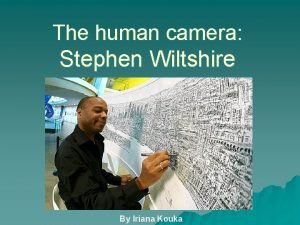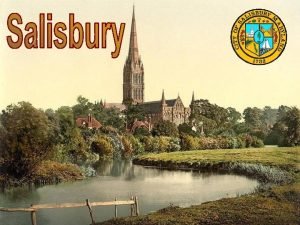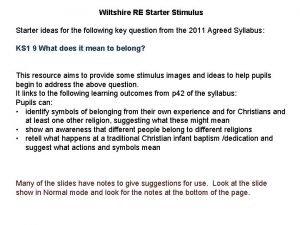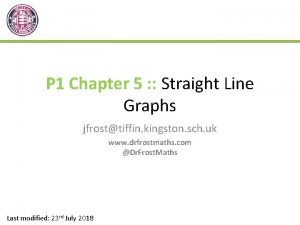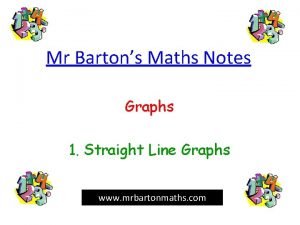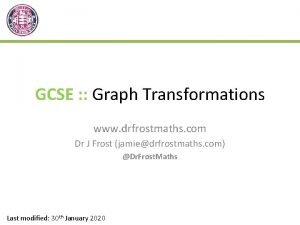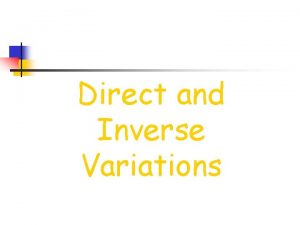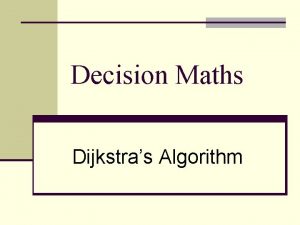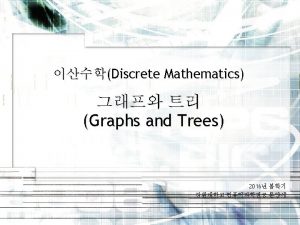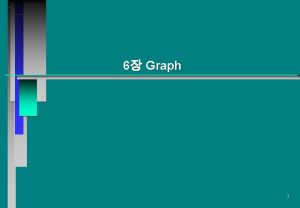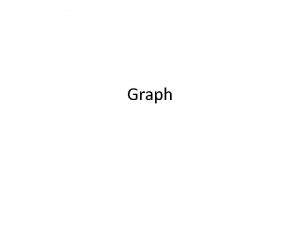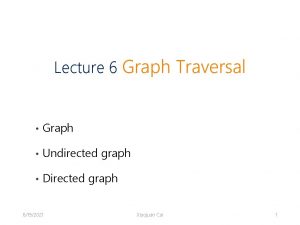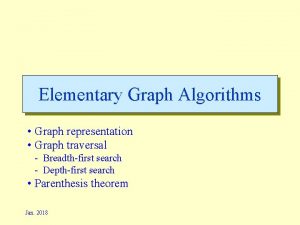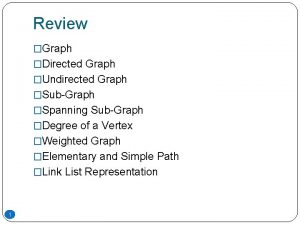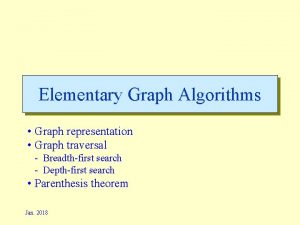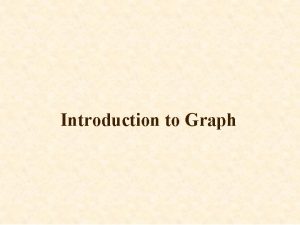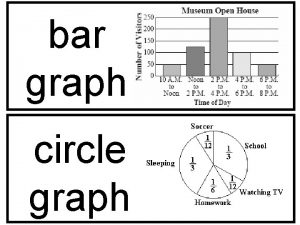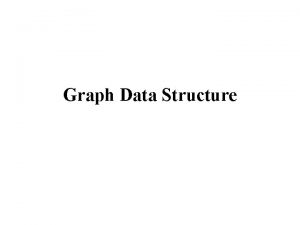Decision Maths Graphs Graphs Wiltshire n A graph

















- Slides: 17

Decision Maths Graphs

Graphs Wiltshire n A graph is just a diagram made up of “dots” and “lines”. These are all graphs. n The dots are called “nodes” or “vertices” (singular is vertex) n The lines are called “edges” or “arcs”

Definitions 1 n Wiltshire An edge with the same vertex at each end is called a loop. n The degree or order of a vertex is the number of edges incident on it. n Question – For any graph the total of the orders of its verticies is even, why? n A simple graph is one in which there are no loops, and in which there is no more than one edge connecting any pair of vertices.

Definitions 3 n A walk is a sequence of edges in which the end of one edge (except the last) is the beginning of the next. Wiltshire n A trail is a walk in which no edge is repeated.

Definitions 4 Wiltshire n A path is a trail in which no vertex is repeated. n A graph is connected if there exists a path between every pair of vertices.

Definitions 5 Wiltshire n A cycle is a closed path if the end of the last edge is the start of the first. n A Hamiltonian cycle is a cycle which visits every vertex once and only once.

Definitions 6 Wiltshire n A tree is a simple connected graph with no cycles. A tree Not trees

Definitions 7 Wiltshire n A Digraph (Directed Graph) is a graph in which at least one edge has a direction associated with it. n A complete graph is a simple graph in which every pair of vertices is connected by an edge.

Definitions 8 Wiltshire n An incidence matrix is a way of representing the number of edges between nodes in a matrix. The graph below is represented by the matrix next to it.

Definitions 9 Wiltshire n Two graphs are Isomorphic if one can be stretched, twisted or otherwise distorted into the other. n Which two graphs below are Isomorphic? n If two graphs are isomorphic then the labels on them must correspond to each other.

Definitions 10 Wiltshire n A planar graph is one which can be drawn without any edges crossing. n Which graph(s) below is Planar? n Draw two examples of Planar graphs.

Definitions 11 Wiltshire n A bipartite graph is one in which the vertices fall into two sets and in which each edge has a vertex from one set at one end and from the other set at its other end.

Question 1 Wiltshire n X = { 2, 3, 4, 5, 6} Draw a graph to represent the relationship ‘share a common factor other than 1’

Question 2 Wiltshire n X = { London, Oxford, Birmingham, Cambridge, Leicester} n Let X x X be the set of all possible pairs from the set X. (there exists a road between the two towns) n Xx. X= { (London, Oxford) (London, Birmingham) (London, Cambridge) (London, Leicester) (Oxford, London) (Oxford, Birmingham) (Birmingham, London) (Birmingham, Oxford) (Birmingham, Leicester) (Cambridge, London) (Leicester, Birmingham) } n Draw a graph to show the set X x X.

Question 2 Wiltshire

Question 3 – Ex 2 A q 13 pg 54 n Each node represents a section of land. n And each arc is the route over the bridges. Wiltshire

Eulerian Wiltshire n A graph is called Eulerian or traversable if each can be traced once and only once, without lifting pencil from paper. n A graph is traversable if it has no odd vertices or just two odd vertices. n Prove that the graph below is traversable.
 Objectives of decision making
Objectives of decision making Investment decision financing decision dividend decision
Investment decision financing decision dividend decision Wiltshire virtual school
Wiltshire virtual school Wiltshire safeguarding adults
Wiltshire safeguarding adults Human camera
Human camera Wiltshire dofa
Wiltshire dofa Wiltshire cathedral city
Wiltshire cathedral city Re starter
Re starter Dr frost linear graphs
Dr frost linear graphs Line graph notes
Line graph notes State bugs in software testing
State bugs in software testing Speed and velocity
Speed and velocity Graphs that enlighten and graphs that deceive
Graphs that enlighten and graphs that deceive End behavior chart
End behavior chart Decision table and decision tree examples
Decision table and decision tree examples Gcse transformations of graphs
Gcse transformations of graphs Networks and graphs: circuits, paths, and graph structures
Networks and graphs: circuits, paths, and graph structures What is the difference between inverse and direct variation
What is the difference between inverse and direct variation




